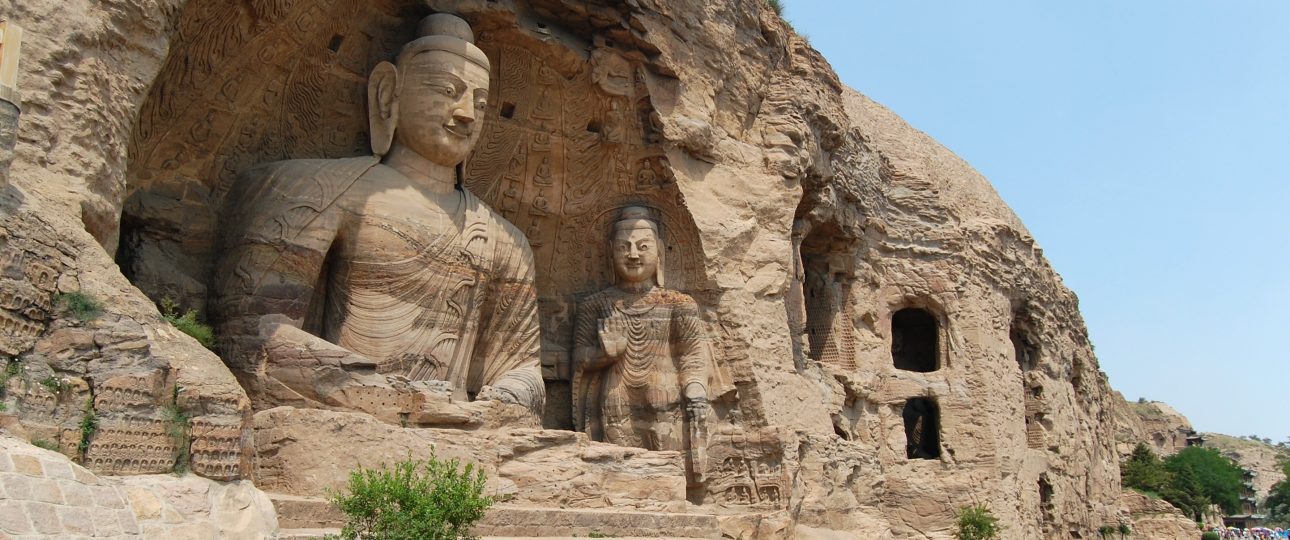Introduction
Welcome to my latest travel guide, where I’ll be taking you on a virtual journey to the mesmerizing destination of the Yungang Grottoes in China. Prepare to be captivated by the rich history, stunning art, and awe-inspiring natural beauty of this hidden gem.
History and Significance
The Yungang Grottoes have a fascinating history that dates back to the 5th century. They were commissioned by Emperor Xiaowen of the Northern Wei Dynasty as a testament to his devotion to Buddhism. The grottoes are a UNESCO World Heritage Site and are considered one of the most important Buddhist cave complexes in the world.
As you explore the grottoes, you’ll be amazed by the intricate carvings and statues that adorn the caves. There are over 51,000 statues in total, ranging in size from a few centimeters to 17 meters. The craftsmanship and attention to detail are truly remarkable, and it’s easy to see why the Yungang Grottoes are considered a masterpiece of ancient Chinese art.
Getting There
Getting to the Yungang Grottoes is relatively straightforward. The closest major city is Datong, which is well-connected by train and air to other major cities in China. From Datong, you can take a taxi or a local bus to the grottoes. The journey takes around 30 minutes, and the entrance fee is reasonable.
Best Time to Visit
The best time to visit the Yungang Grottoes is during the spring and autumn months when the weather is mild and the crowds are smaller. The caves can get quite crowded during the peak summer months, so if you prefer a more peaceful experience, it’s best to avoid visiting during this time.
Exploring the Grottoes
Once you arrive at the grottoes, prepare to be amazed by the sheer size and beauty of the caves. The grottoes are divided into three main areas: the East Hill, the West Hill, and the Central Hill. Each area offers a unique experience, so be sure to explore them all.
As you wander through the caves, take the time to appreciate the intricate carvings and the serene atmosphere. The caves are filled with Buddhist imagery, from statues of the Buddha to scenes from Buddhist scriptures. It’s truly a spiritual experience and a testament to the devotion of those who created these masterpieces.
One of the highlights of the Yungang Grottoes is Cave 20, also known as the “Cave of the Thousand Buddhas.” This cave is particularly impressive, as it houses over 50 life-sized statues of the Buddha. The sight of all these statues together is truly awe-inspiring and is a must-see for any visitor.
Local Transportation
Getting around the Yungang Grottoes is relatively easy. There are shuttle buses that connect the different areas of the grottoes, making it convenient to explore. The buses run regularly, and the fares are affordable.
If you prefer a more leisurely experience, you can also choose to walk between the different areas. The paths are well-maintained, and the walk allows you to take in the beauty of the surrounding landscape.
Summary of Facts
- The Yungang Grottoes are located in China and were commissioned by Emperor Xiaowen of the Northern Wei Dynasty.
- There are over 51,000 statues in the grottoes, ranging in size from a few centimeters to 17 meters.
- The grottoes are a UNESCO World Heritage Site and are considered one of the most important Buddhist cave complexes in the world.
- The closest major city to the grottoes is Datong, which is well-connected by train and air.
- The best time to visit is during the spring and autumn months to avoid crowds.
- The grottoes are divided into three main areas: the East Hill, the West Hill, and the Central Hill.
- Cave 20, also known as the “Cave of the Thousand Buddhas,” is a must-see.
- Local transportation options include shuttle buses and walking.
So there you have it, a comprehensive guide to the Yungang Grottoes in China. I hope this article has inspired you to add this incredible destination to your travel bucket list. Trust me, it’s a journey you won’t soon forget.




